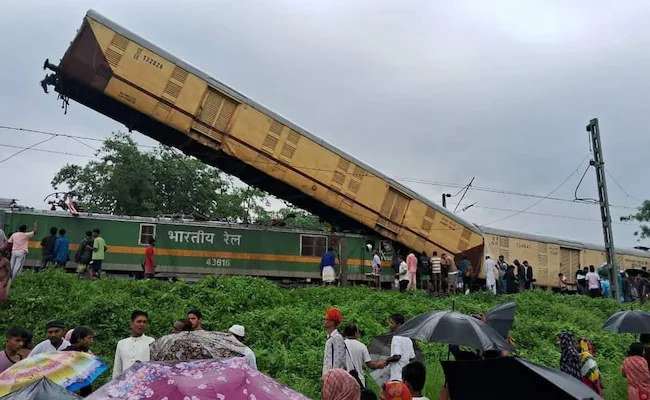
Staff Shortages in Indian Railways: A Growing Threat to Passenger Safety
The recent train crash in West Bengal, which tragically claimed eight lives and injured around 60 people, has once again highlighted the severe issues plaguing Indian Railways. This accident, where a goods train collided with the stationary Kanchenjungha Express, has brought the spotlight on the acute shortage of railway staff and its dire consequences. With over 3.12 lakh non-gazetted posts lying vacant, the Indian Railways is grappling with a severe manpower crisis. This shortage is not just an administrative issue but a significant safety concern that endangers the lives of millions of passengers daily.
The Extent of the Staff Shortage
According to government data, as of June 1, 2024, Indian Railways had a staggering 3.12 lakh non-gazetted posts vacant across its 18 zones. These vacancies are not uniformly distributed but are most acute in critical areas. The Northern zone has the highest number of vacancies at 38,754, followed by the Western (30,476), Eastern (30,141), and Central zones (28,650). Non-gazetted posts include essential roles such as engineers, technicians, clerks, station masters, and ticket collectors.
Impact on Safety and Operations
The shortage of staff has a direct impact on the safety and efficiency of railway operations. In the Central Railway zone, nearly 50% of the 28,650 vacancies are in the safety category. This includes operating and maintenance staff like inspectors, drivers, train examiners, and shunters. The absence of these critical personnel means that the existing workforce is overburdened, often working 18-19 hours in a streak. This excessive workload leads to fatigue, which can result in human errors, such as the one suspected in the recent crash in West Bengal.
Overworked Employees: A Recipe for Disaster
The severe understaffing has forced many railway employees to work overtime, often stretching beyond human limits. Long working hours without adequate rest can impair judgment and reaction times, increasing the likelihood of accidents. For instance, train drivers, who should ideally be well-rested to ensure they can operate trains safely, are now often working under extreme fatigue. This situation is unsustainable and poses a significant risk to both the employees and the passengers.
Inadequate Maintenance and Service
The staff crunch also affects the maintenance of railway infrastructure. With fewer inspectors and maintenance staff, regular checks and upkeep of tracks, signals, and trains are compromised. This neglect can lead to the deterioration of infrastructure, increasing the chances of derailments and other accidents. Furthermore, the lack of ticket collectors and clerks has led to long queues and congestion at booking windows, causing frustration among passengers and reducing the overall quality of service.
Government’s Acknowledgment and Inaction
Despite acknowledging the staff shortage, there has been little action from the government to address the issue. Railway Minister Ashwini Vaishnaw admitted in March last year that there is a huge staff shortage for all posts. However, the situation has not improved, indicating a lack of urgency in resolving this critical problem. The recent crash has prompted criticism from opposition leaders, who accuse the government of mismanagement and neglect of the railways.
Public Protests and Union Demands
The severity of the staff shortage has led to public protests and demands from railway unions. In late November last year, the National Railway Mazdoor Union (NRMU) of the Central Railway staged a peaceful protest at the Chhatrapati Shivaji Terminus against the 28,705 vacant posts. The union highlighted the plight of overworked employees and the safety risks posed by the staff shortages. These protests underscore the growing frustration among railway employees and their demand for immediate action to fill the vacant positions.
The tragic train crash in West Bengal serves as a grim reminder of the consequences of neglecting the staffing needs of Indian Railways. The acute shortage of non-gazetted staff, especially in critical safety roles, is compromising the safety and efficiency of railway operations. Overworked employees, inadequate maintenance, and poor service quality are direct results of this staff crunch. It is imperative for the government to address these vacancies urgently and ensure that Indian Railways has the necessary manpower to operate safely and efficiently. The lives of millions of passengers depend on it.
Call to Action
To prevent further tragedies and improve the overall condition of Indian Railways, the following steps must be taken immediately:
Urgent Recruitment Drive: Conduct a nationwide recruitment drive to fill the 3.12 lakh non-gazetted posts lying vacant across the country. Priority should be given to safety-critical roles such as inspectors, drivers, and maintenance staff.
Improve Working Conditions: Implement policies to ensure reasonable working hours and adequate rest for railway employees. Overworked staff are prone to mistakes that can lead to accidents.
Regular Maintenance: Ensure that regular and thorough maintenance of tracks, signals, and trains is conducted. Adequate staffing in maintenance roles is crucial for the safety of railway operations.
Upgrade Infrastructure: Invest in modernizing and upgrading railway infrastructure. Improved technology and better-maintained equipment can significantly reduce the risk of accidents.
Government Accountability: Hold the government and railway ministry accountable for addressing the staff shortages and ensuring passenger safety. Regular audits and transparency in recruitment and maintenance processes are essential.
Strengthen Railway Unions: Empower railway unions to advocate for the rights and safety of employees. Their insights and on-ground experiences are valuable for identifying and addressing operational issues.
Be a Part of Our Community | Your Voice Matters: Report Issues and Share Stories with The Philoxhttps://t.me/thephilox
By joining our Telegram group, you become a part of a vibrant community dedicated to bringing real issues to light. Your contributions can help create awareness and drive change.
Join our official Telegram group today and be a part of the change. Together, we can make a difference.
